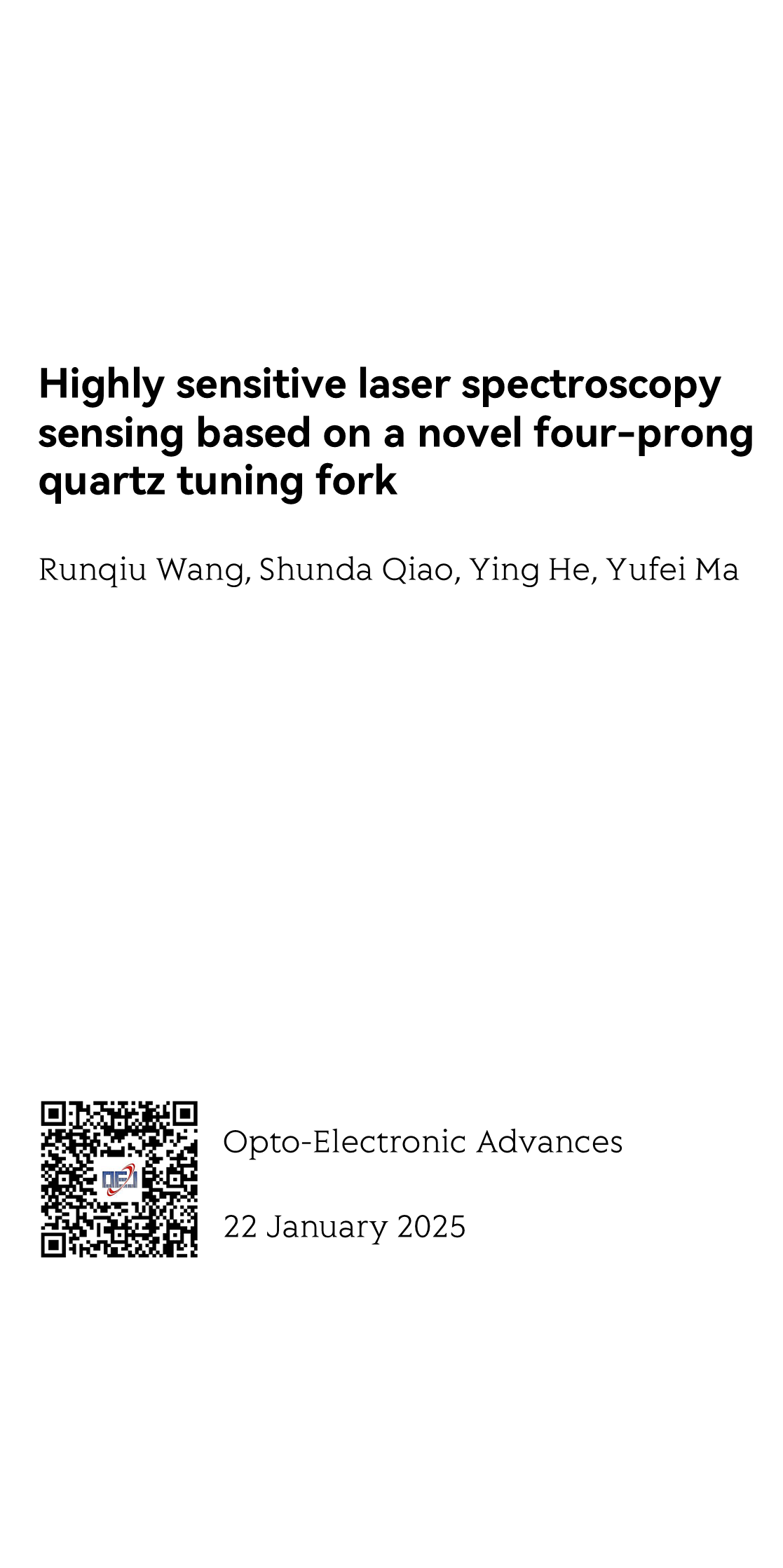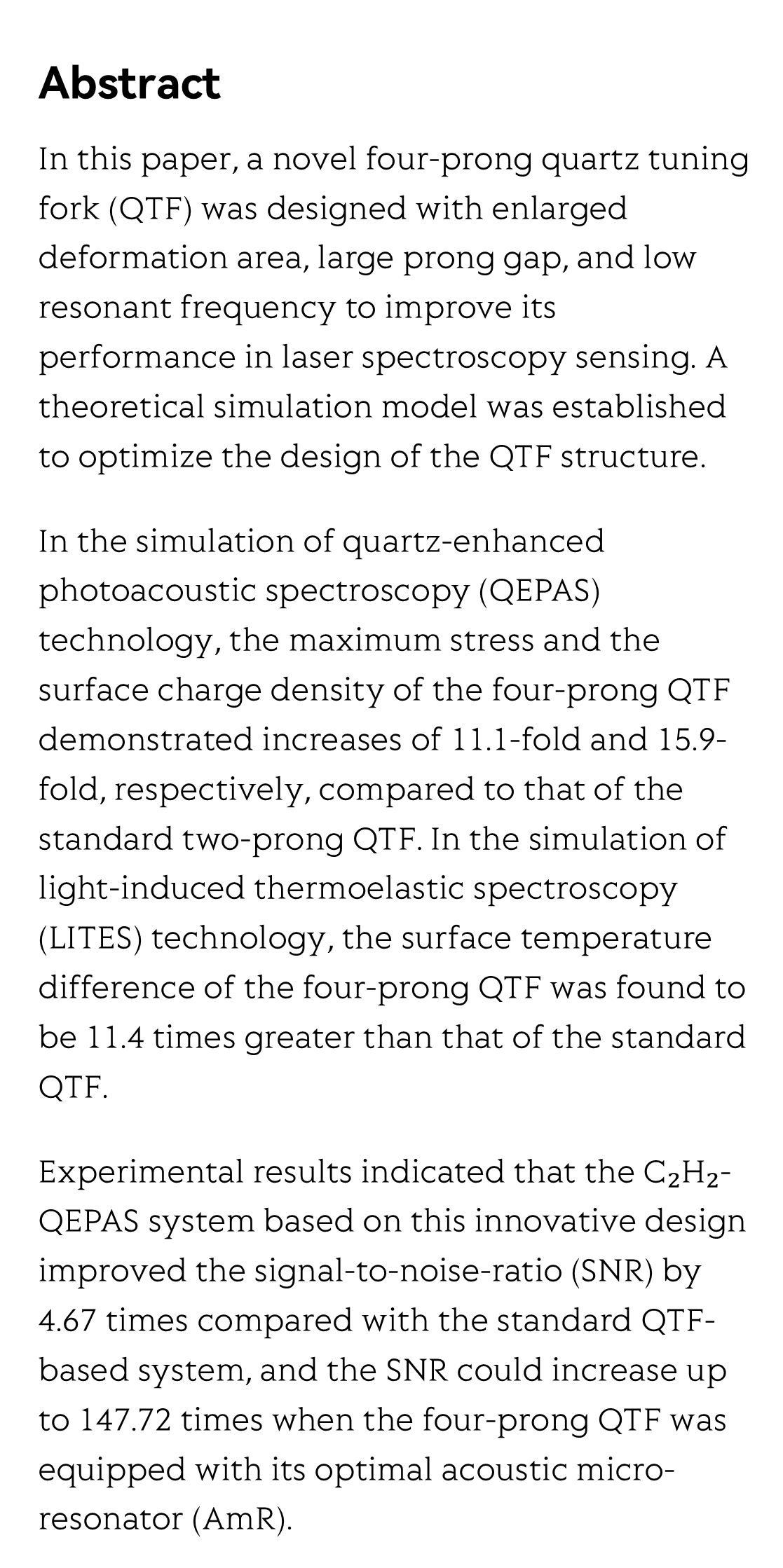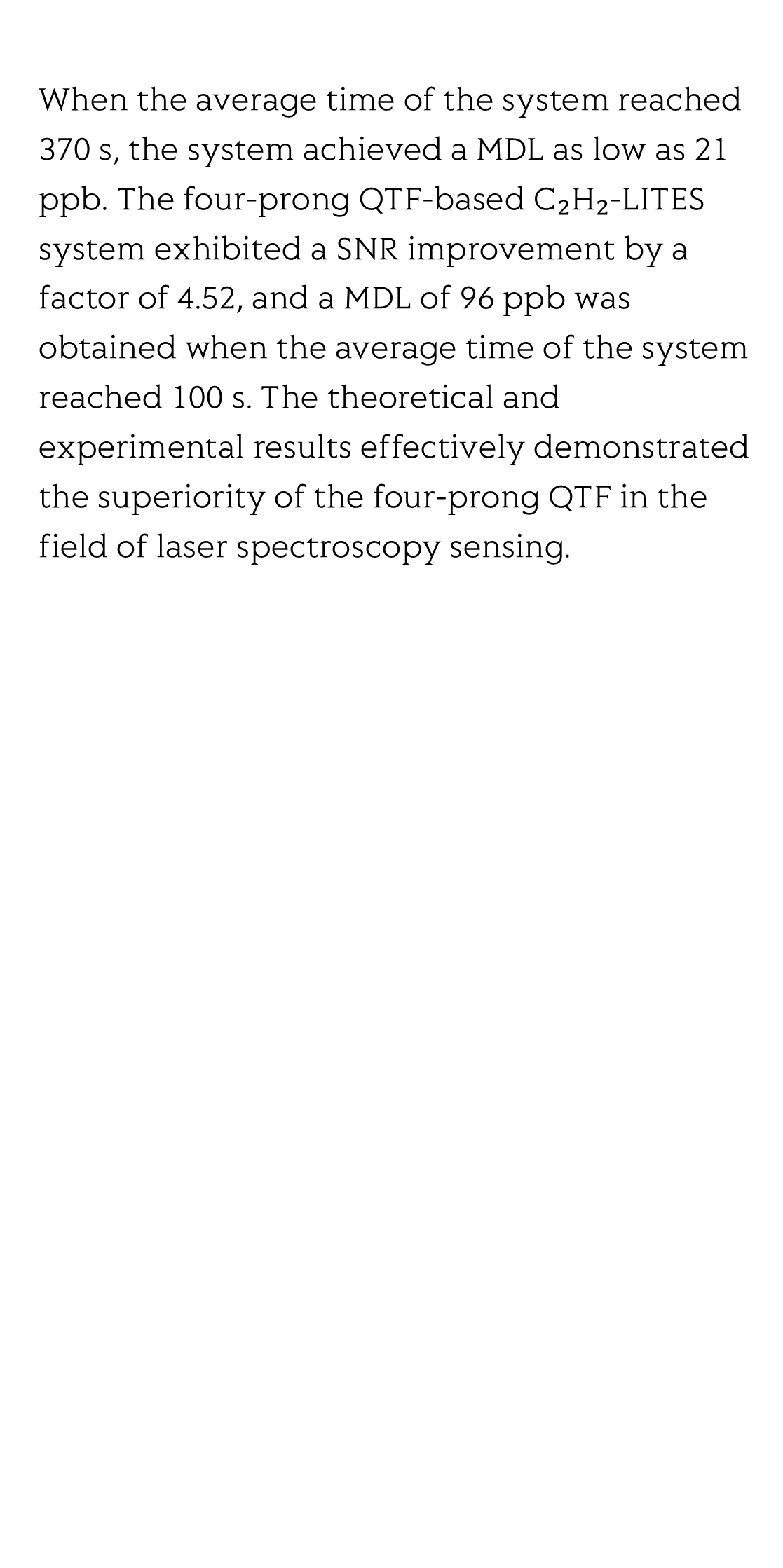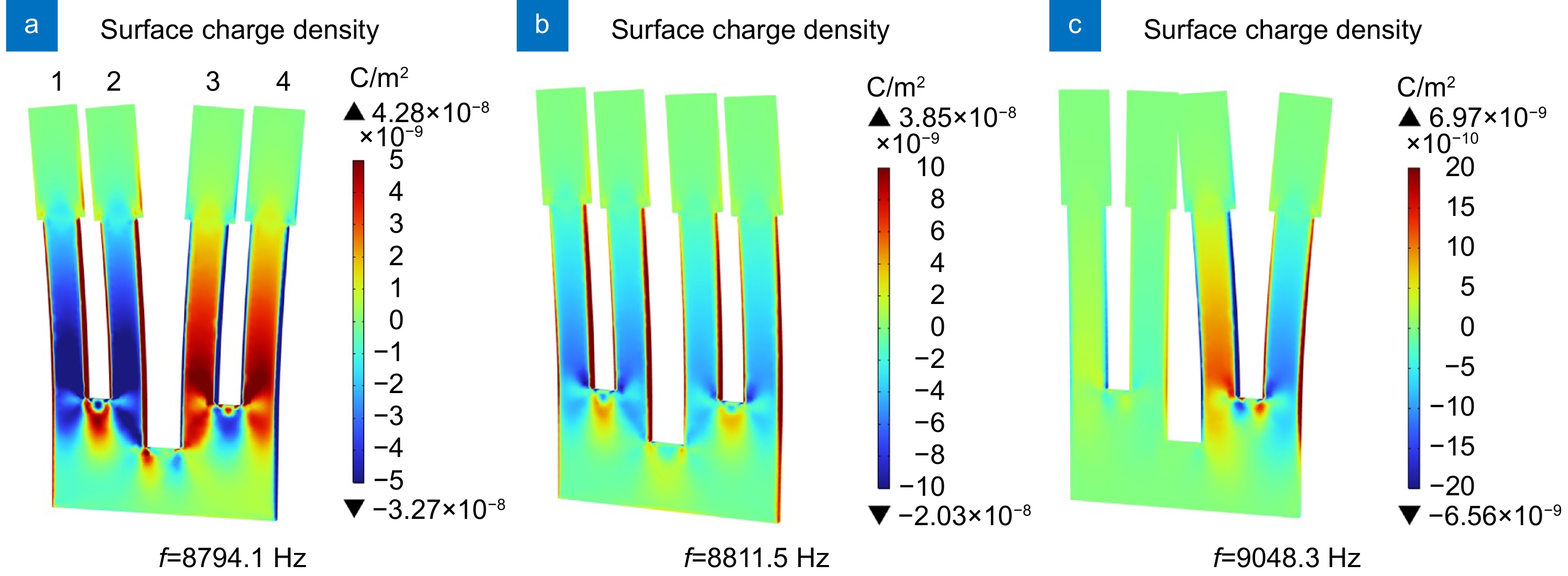(Peer-Reviewed) Highly sensitive laser spectroscopy sensing based on a novel four-prong quartz tuning fork
Runqiu Wang 王润秋 ¹ ², Shunda Qiao 乔顺达 ¹ ², Ying He 何英 ¹ ², Yufei Ma 马欲飞 ¹ ²
¹ National Key Laboratory of Laser Spatial Information, Harbin Institute of Technology, Harbin 150000, China
中国 哈尔滨 哈尔滨工业大学 激光空间信息全国重点实验室
² Zhengzhou Research Institute, Harbin Institute of Technology, Zhengzhou 450000, China
中国 哈尔滨 哈尔滨工业大学郑州研究院
Opto-Electronic Advances
, 2025-01-22
Abstract
In this paper, a novel four-prong quartz tuning fork (QTF) was designed with enlarged deformation area, large prong gap, and low resonant frequency to improve its performance in laser spectroscopy sensing. A theoretical simulation model was established to optimize the design of the QTF structure.
In the simulation of quartz-enhanced photoacoustic spectroscopy (QEPAS) technology, the maximum stress and the surface charge density of the four-prong QTF demonstrated increases of 11.1-fold and 15.9-fold, respectively, compared to that of the standard two-prong QTF. In the simulation of light-induced thermoelastic spectroscopy (LITES) technology, the surface temperature difference of the four-prong QTF was found to be 11.4 times greater than that of the standard QTF.
Experimental results indicated that the C₂H₂-QEPAS system based on this innovative design improved the signal-to-noise-ratio (SNR) by 4.67 times compared with the standard QTF-based system, and the SNR could increase up to 147.72 times when the four-prong QTF was equipped with its optimal acoustic micro-resonator (AmR).
When the average time of the system reached 370 s, the system achieved a MDL as low as 21 ppb. The four-prong QTF-based C₂H₂-LITES system exhibited a SNR improvement by a factor of 4.52, and a MDL of 96 ppb was obtained when the average time of the system reached 100 s. The theoretical and experimental results effectively demonstrated the superiority of the four-prong QTF in the field of laser spectroscopy sensing.
Review for wireless communication technology based on digital encoding metasurfaces
Haojie Zhan, Manna Gu, Ying Tian, Huizhen Feng, Mingmin Zhu, Haomiao Zhou, Yongxing Jin, Ying Tang, Chenxia Li, Bo Fang, Zhi Hong, Xufeng Jing, Le Wang
Opto-Electronic Advances
2025-07-17
Multiphoton intravital microscopy in small animals of long-term mitochondrial dynamics based on super‐resolution radial fluctuations
Saeed Bohlooli Darian, Jeongmin Oh, Bjorn Paulson, Minju Cho, Globinna Kim, Eunyoung Tak, Inki Kim, Chan-Gi Pack, Jung-Man Namgoong, In-Jeoung Baek, Jun Ki Kim
Opto-Electronic Advances
2025-07-17
Non-volatile tunable multispectral compatible infrared camouflage based on the infrared radiation characteristics of Rosaceae plants
Xin Li, Xinye Liao, Junxiang Zeng, Zao Yi, Xin He, Jiagui Wu, Huan Chen, Zhaojian Zhang, Yang Yu, Zhengfu Zhang, Sha Huang, Junbo Yang
Opto-Electronic Advances
2025-07-09
CW laser damage of ceramics induced by air filament
Chuan Guo, Kai Li, Zelin Liu, Yuyang Chen, Junyang Xu, Zhou Li, Wenda Cui, Changqing Song, Cong Wang, Xianshi Jia, Ji'an Duan, Kai Han
Opto-Electronic Advances
2025-06-27
Operando monitoring of state of health for lithium battery via fiber optic ultrasound imaging system
Chen Geng, Wang Anqi, Zhang Yi, Zhang Fujun, Xu Dongchen, Liu Yueqi, Zhang Zhi, Yan Zhijun, Li Zhen, Li Hao, Sun Qizhen
Opto-Electronic Science
2025-06-25
Observation of polaronic state assisted sub-bandgap saturable absorption
Li Zhou, Yiduo Wang, Jianlong Kang, Xin Li, Quan Long, Xianming Zhong, Zhihui Chen, Chuanjia Tong, Keqiang Chen, Zi-Lan Deng, Zhengwei Zhang, Chuan-Cun Shu, Yongbo Yuan, Xiang Ni, Si Xiao, Xiangping Li, Yingwei Wang, Jun He
Opto-Electronic Advances
2025-06-19







